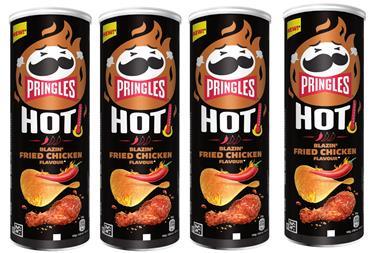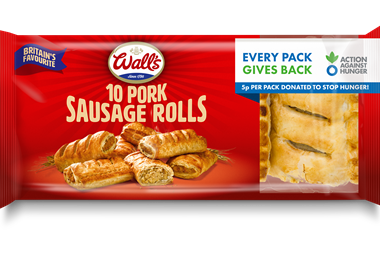One person's 'basket essentials' could well be another person's indulgence. For a mum looking for something for the kids it could mean fish fingers, cereals and milk, while for a 20-something male on the way to his mate's to watch the footie, it could mean beer, pizza and more beer. That said, it's generally held that when we say 'basket essentials' we mean items such as bread and milk.
Research and consulting firm HIM reports that the top-selling items in c-stores are newspapers, bread, milk and cigarettes. Marketing manager Georgina Wild says that if these products are not available then customers will simply go elsewhere, taking their whole basket spend with them.
"These are the core products which customers are buying they are essential to the success of any good convenience store because they are the footfall drivers," she says.
However, HIM data reveals that the difference between intended and actual purchases (often referred to as 'slippage') can be quite substantial.
Wild explains: "Understanding failed purchase by time of day/day of week is important so retailers can make sure that stock is delivered and replenished at the key times of the day."
According to HIM's data, 'slippage' occurs for bread throughout the morning and afternoon, meaning that sales are lost across the day. Yet, interestingly more bread was purchased than intended at about 4pm. And for butter and spreads, more was bought than intended throughout the day, but particularly at lunchtimes.
Meanwhile, Warburtons' latest Bakery Review reveals that more than 12 million bakery packs are bought each day in the UK, so retailers need to ensure their bakery fixtures remain fully stocked throughout the day and not just in the morning. The company's category manager Caroline Kellett comments: "Getting your bakery fixture right will give customers confidence in your store and will encourage regular repeat visits."
Milk shoppers are valuable customers to convenience retailers, as they tend to purchase more than just their milk when they visit, plus they visit more frequently. Indeed, in the latest Convenience Tracking Programme (CTP) findings from HIM it shows that milk shoppers visit their local store 3.8 times per week compared with a CTP average of 3.6 times. Also milk shoppers spend, on average, £6.84 compared with the CTP average shopper spend of £5.10.
Wiseman sales and marketing director Sandy Wilkie reckons retailers should ensure that their milk fixture reflects the current consumer trends by giving more space to the more popular items. "For example, we advise customers to increase the space allocated to 'the One' to allow retailers to build on the growth of the 1% milk category. The expanding range of milk products offers more opportunities to use the footfall driven by milk to generate increased sales. Once the customer is through the door the key issues then become availability and display. It is essential that customers can see exactly what is available."
Wiseman staff encourage retailers to review their chiller every hour to ensure it is tidy and that stocks have been rotated to minimise waste.
"One statistic worth considering is that most milk is sold after 3pm, so it is critical that this is taken into consideration when reviewing ordering," adds Wilkie.
But there's more to 'basket essentials' than just getting the ranging and availability right. According TNS Retail and Shopper global director Siemon Scamell-Katz, you've got to think about the actual baskets, too.
"The classic mistake that some retailers make is putting baskets next to the front door," he says. "They need to be later in the store, when shoppers already have one or two bits in their hands. They then pick up a basket and pick up more items. Retailers can increase sales 10% by doing that."
Scamell-Katz recommends that retailers consider their 'destination' categories, too. "If yours is a neighbourhood site those categories will be milk and bread, while for a more transient site they would be sandwiches and soft drinks. You need to have baskets sited near those categories so that when shoppers turn away from them with items in their hands, there are baskets available."
He goes on: "We've found that shoppers typically spend eight minutes in a c-store outlet. But most of those people use the store on a very regular basis so they know where things are. They hardly ever do their main shop there, they just use those eight minutes to go straight to the products they need."
Scamell-Katz says that another classic mistake retailers make is to put key categories at the back to encourage people to walk through the whole store. "Shoppers never go backwards. They'll enter the store, head straight for what they want and they won't go back and pick up other items. So if they miss something on the way, they won't go back for it. For example, retailers don't like to put milk near the door because they worry that people will just pick up the milk and head for the till, but if you make it more efficient for them to shop, they will carry on using your shop."
Research and consulting firm HIM reports that the top-selling items in c-stores are newspapers, bread, milk and cigarettes. Marketing manager Georgina Wild says that if these products are not available then customers will simply go elsewhere, taking their whole basket spend with them.
"These are the core products which customers are buying they are essential to the success of any good convenience store because they are the footfall drivers," she says.
However, HIM data reveals that the difference between intended and actual purchases (often referred to as 'slippage') can be quite substantial.
Wild explains: "Understanding failed purchase by time of day/day of week is important so retailers can make sure that stock is delivered and replenished at the key times of the day."
According to HIM's data, 'slippage' occurs for bread throughout the morning and afternoon, meaning that sales are lost across the day. Yet, interestingly more bread was purchased than intended at about 4pm. And for butter and spreads, more was bought than intended throughout the day, but particularly at lunchtimes.
Meanwhile, Warburtons' latest Bakery Review reveals that more than 12 million bakery packs are bought each day in the UK, so retailers need to ensure their bakery fixtures remain fully stocked throughout the day and not just in the morning. The company's category manager Caroline Kellett comments: "Getting your bakery fixture right will give customers confidence in your store and will encourage regular repeat visits."
Milk shoppers are valuable customers to convenience retailers, as they tend to purchase more than just their milk when they visit, plus they visit more frequently. Indeed, in the latest Convenience Tracking Programme (CTP) findings from HIM it shows that milk shoppers visit their local store 3.8 times per week compared with a CTP average of 3.6 times. Also milk shoppers spend, on average, £6.84 compared with the CTP average shopper spend of £5.10.
Wiseman sales and marketing director Sandy Wilkie reckons retailers should ensure that their milk fixture reflects the current consumer trends by giving more space to the more popular items. "For example, we advise customers to increase the space allocated to 'the One' to allow retailers to build on the growth of the 1% milk category. The expanding range of milk products offers more opportunities to use the footfall driven by milk to generate increased sales. Once the customer is through the door the key issues then become availability and display. It is essential that customers can see exactly what is available."
Wiseman staff encourage retailers to review their chiller every hour to ensure it is tidy and that stocks have been rotated to minimise waste.
"One statistic worth considering is that most milk is sold after 3pm, so it is critical that this is taken into consideration when reviewing ordering," adds Wilkie.
But there's more to 'basket essentials' than just getting the ranging and availability right. According TNS Retail and Shopper global director Siemon Scamell-Katz, you've got to think about the actual baskets, too.
"The classic mistake that some retailers make is putting baskets next to the front door," he says. "They need to be later in the store, when shoppers already have one or two bits in their hands. They then pick up a basket and pick up more items. Retailers can increase sales 10% by doing that."
Scamell-Katz recommends that retailers consider their 'destination' categories, too. "If yours is a neighbourhood site those categories will be milk and bread, while for a more transient site they would be sandwiches and soft drinks. You need to have baskets sited near those categories so that when shoppers turn away from them with items in their hands, there are baskets available."
He goes on: "We've found that shoppers typically spend eight minutes in a c-store outlet. But most of those people use the store on a very regular basis so they know where things are. They hardly ever do their main shop there, they just use those eight minutes to go straight to the products they need."
Scamell-Katz says that another classic mistake retailers make is to put key categories at the back to encourage people to walk through the whole store. "Shoppers never go backwards. They'll enter the store, head straight for what they want and they won't go back and pick up other items. So if they miss something on the way, they won't go back for it. For example, retailers don't like to put milk near the door because they worry that people will just pick up the milk and head for the till, but if you make it more efficient for them to shop, they will carry on using your shop."



























No comments yet